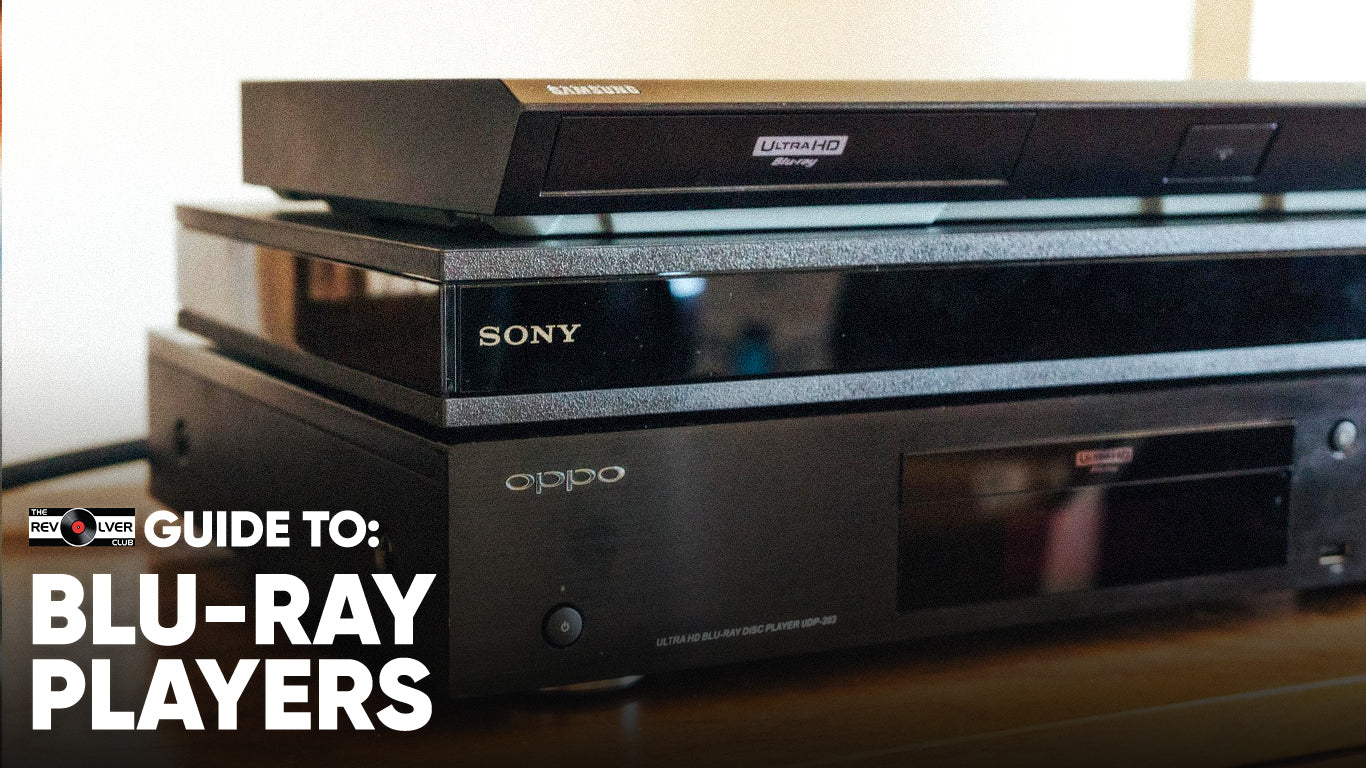Guide To Choose Blu Ray Player | The Revolver Club

For a film viewing experience at it’s best, Blu Ray Players still are the go to devices.
A Blu Ray player is the best way to take advantage of a high-definition (HD) TV that can support 1080p or even 2160p (also known as 4K or UHD). Most have built-in WiFi for connecting to your network. Some models still offer 3D capability.

A standard Blu Ray player is the way to go if you own an HDTV.
4K Ultra HD Blu Ray Player is the way to go along with a 4K TV, as such a setup will offer the best picture quality you can get today with a 4K resolution. These new players also support a wide range of colors and have a high dynamic range capability.
Things to consider while buying your first Blu Ray Player:
One of the first considerations out of many should be the budget allotted for the player besides the amount you are willing to spend for your A/V Components.
In case of already available A/V components, stretching out the budget for a player shouldn’t be a problem.
It’s important to remember that just because a product is pricey, doesn't mean it’s the best option. You don’t need to spend a lot of money if the model you are looking for has all the required components at a lower price point.
Connectivity:
All regular and 4K Blu-ray players have HDMI outputs, which carry audio and video on a single cable to your TV or A/V receiver, simplifying connections.
Regular Blu-ray players have HDMI 1.4 outputs, but newer 4K Ultra HD models have HDMI 2.0 outputs.
Those that support HDR require HDMI 2.0a connections. Some Blu-ray players may have composite (yellow, red, and white) RCA connections for use with older gear.
Toslink (optical) and RCA (coaxial) outputs provide a digital audio connection; either is a good option if you're unable to use HDMI to connect your Blu-ray player to your home theatre system.
However, while these connections support most digital audio formats, they don't support lossless audio formats such as Dolby TrueHD and DTS-HD Master audio signals.
Region Restriction:
Blu-ray discs only have three regions, and Australia is in the same region as most of Europe and Africa. However, 4K UHD discs are region free.
Region issues are less of an issue for Blu-ray discs but it is still possible for a Blu-ray movie purchased overseas not to be supported on your player.
BD Live:
Blu-ray players can have the capability of connecting through the Internet to extra online features.
Things like outtakes, video games, and trailers can be viewed online through the player.
Some specific movies also come with bonus features that are accessible through BD-Live.
USB Ports:
These ports help in loading new firmware if there is unavailability of a network method.
Also, you can play your digital media files stored on the drive as well as use the port for connectivity purposes via WIFI USB Dongle.
Dual HDMI:
If you’re using an A/V receiver that doesn’t support 4K or HDR passthrough but want to run an Ultra HD Blu-ray Player into your 4K TV, a second, audio-only HDMI output lets you do so without cutting off audio options like Dolby TrueHD.
Wi-Fi:
It is definitely an important feature for your Blu-Ray player that allows users to stream 4K videos directly from the internet with much smoother details. Most of these players work on 2.4GHz standard that is much more crowded whereas few allow 5GHz frequency band.





